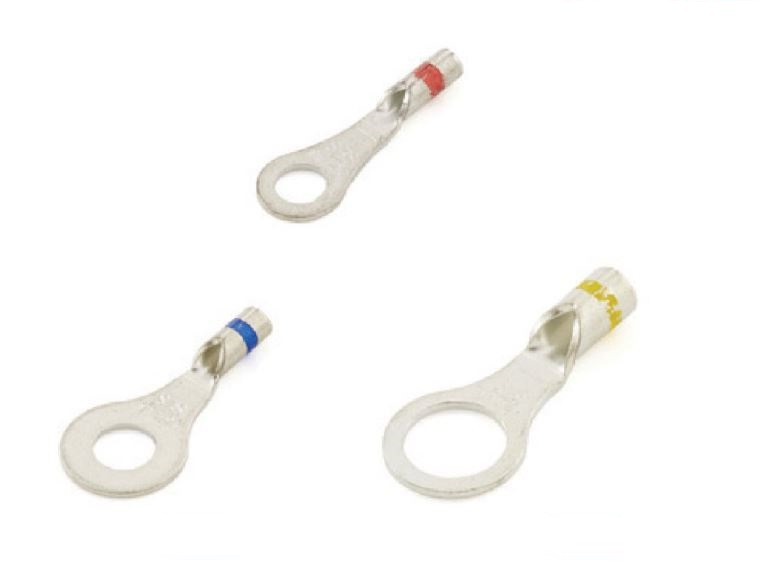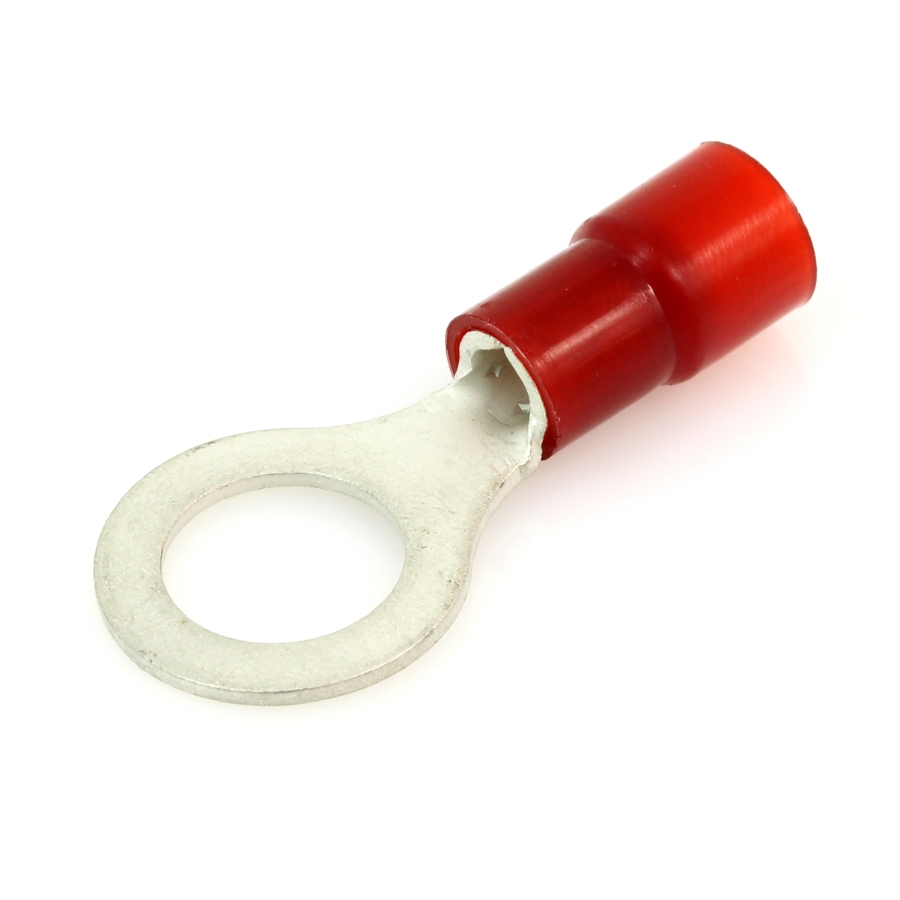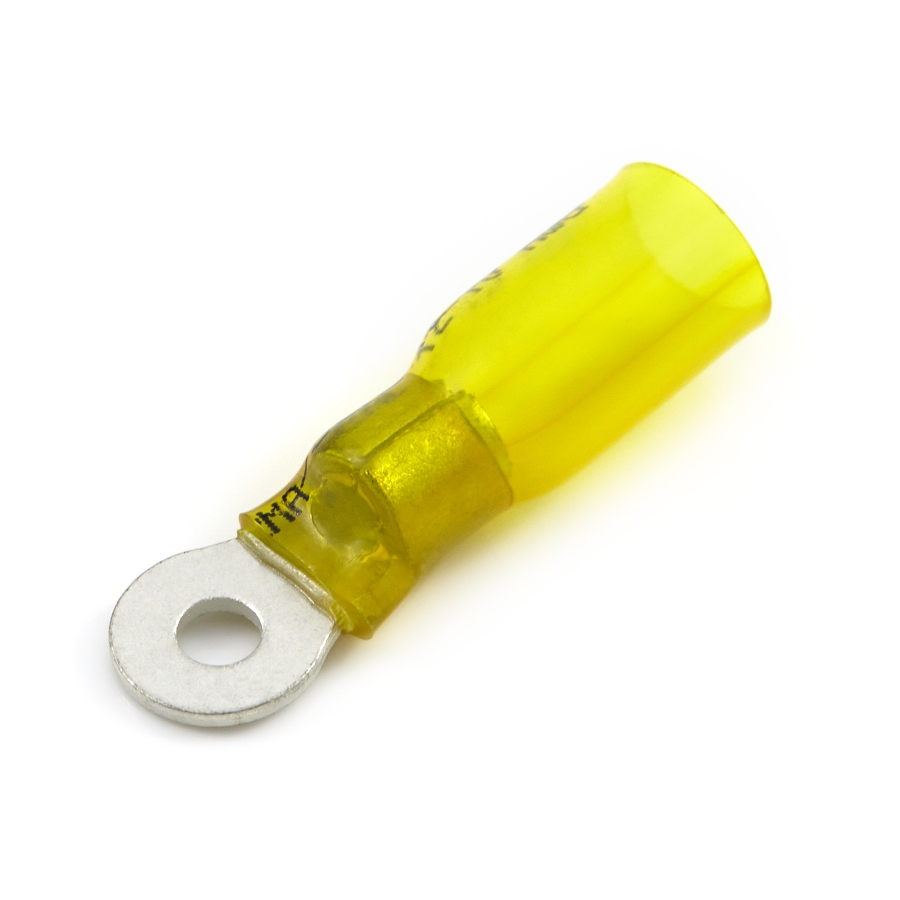Insulated vs. Non-Insulated Terminals 101
 When it comes to making secure electrical connections in vehicle systems, choosing the right type of terminal is essential—not just for performance, but for safety, reliability, and ease of installation. A key decision point lies in whether to use insulated or non-insulated solderless terminals. Both have their place in automotive and marine wiring, industrial control panels, and vehicle upfitting—so understanding their differences can help buyers and technicians make the right call for their application.
When it comes to making secure electrical connections in vehicle systems, choosing the right type of terminal is essential—not just for performance, but for safety, reliability, and ease of installation. A key decision point lies in whether to use insulated or non-insulated solderless terminals. Both have their place in automotive and marine wiring, industrial control panels, and vehicle upfitting—so understanding their differences can help buyers and technicians make the right call for their application.
Non-Insulated Terminals: Simple, Economical, and Compact
Non-insulated terminals are essentially the stripped-down workhorses of the terminal world. Constructed of bare metal—typically copper or brass—these terminals don’t include any protective covering over the crimp barrel. Because of their minimalistic design, they are lower in cost, making them a solid option for high-volume production environments or cost-sensitive applications.
Below, right: Non-insulated long-neck ring terminals manufactured by NSPA.
 One of the key benefits of non-insulated terminals is their smaller profile. This makes them ideal in space-restricted areas such as densely packed internal vehicle panels or control boxes, where every millimeter counts.
One of the key benefits of non-insulated terminals is their smaller profile. This makes them ideal in space-restricted areas such as densely packed internal vehicle panels or control boxes, where every millimeter counts.
Technicians value their versatility. However, because they lack built-in insulation, non-insulated terminals should only be used where no additional electrical protection is necessary. One example would be a ground wire connecting to a chassis, where electrical danger is minimal and confined in a relatively sealed environment. But if you’re running a hot wire next to a ground wire, you’ll want insulation for both.
Common uses for non-insulated terminals include enclosed vehicle interiors, fuse boxes, or relay panels where the environment is controlled. Waytek carries a variety of non-insulated ring terminals, fork terminals, and butt splices in popular sizes and materials, designed for durable connections in these types of settings.
Insulated Terminals: Built-In Protection and Field-Ready Performance
On the other end of the spectrum are insulated solderless terminals, which include a built-in protective covering around the barrel. These come in several styles, each offering distinct levels of performance depending on the insulation type. Their color-coded insulation, standardized by wire gauge (red: 22–18 Ga., blue: 16–14 Ga., yellow: 12–10 Ga.), simplifies identification during assembly and troubleshooting—speeding up the wiring process and reducing errors.
Vinyl insulation is the most economical and offers basic protection against accidental contact. It’s a popular choice for general-purpose automotive work and light-duty electrical tasks. Vinyl is known for its flexibility but is softer and less durable than nylon. It does not offer as much strain relief as nylon or heat shrink insulated terminals and is not ideal for long term UV exposure.
Shown at right: A vinyl insulated ring terminal made by Molex.
Nylon Insulated Terminals
Nylon insulation adds durability and better chemical resistance than vinyl, a critical factor in under-hood or high-vibration environments. The built-in strain relief of nylon-insulated terminals helps protect against mechanical stress, especially in applications prone to vibration or movement. They are flexible and pliable for easy crimping, and are available in transparent or semi-transparent form, allowing for easy inspection of the connection. 
Many nylon-insulated terminals are designed for double crimping, which provides additional strain relief and tensile strength. Nylon is also known for impressive UV resistance, making it excellent for use in applications that will be exposed to the sun.
Right: A nylon-insulated ring terminal from Molex.
Heat Shrink Insulated Terminals
For maximum protection, heat shrink-insulated terminals are the gold standard. They seal tightly with proper heat application, offering moisture resistance and corrosion protection—a must for marine wiring, exterior vehicle lighting, and trailer harnesses. 
Heat shrink terminals provide the most strain relief of all the alternatives featured here, by virtue of providing heat shrink over the wire insulation. Many heat shrink terminals also come with an additional adhesive lining (i.e., “dual wall”) for further durability and protection.
Right: A Perma-Seal heat shrink ring terminal from Molex.
Insulated Terminals at Waytek
Waytek’s selection of insulated terminals includes ring, spade, bullet, splice, pin, hook, and quick-disconnect styles, most available in all three insulation types—vinyl, nylon, and heat shrink. For automotive upfitters who need long-lasting, road-ready performance, heat shrink ring terminals are especially popular due to their sealing capability and rugged construction.
Note on Crimping Tools and Techniques: Different terminal insulation types may require different tools. For more information, see How to Choose the Right Crimping Tools. For more information on how to crimp wire and terminals properly, see the article How to Crimp Wires.
Which Terminal Should You Choose – Insulated or Non-insulated?
The decision between insulated and non-insulated terminals often comes down to the environment and end-use. If you’re building a harness for an enclosed panel or integrating into a sealed control box, non-insulated terminals may offer the flexibility and cost efficiency you need. But if the terminal will be exposed to weather, vibration, or corrosive agents, insulated terminals—particularly nylon or heat shrink—provide critical protection and long-term reliability.
In many cases, upfitters and OEMs stock both types to handle a variety of applications. Waytek’s wide inventory of terminals, including non-insulated and insulated, are available in small putups, case quantities, and on reels for high volume use. Whether you're optimizing for price, durability, or installation speed, the right terminal is just a click away.
Explore the full lineup of terminals, tools, and protective accessories at Waytek.
Subscribe Now
Subscribe and be the first to know when new articles are published.

